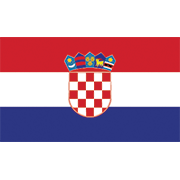Fiscal subject related
General information
Each invoice goes through a series of steps, from issuance to archiving. The European Union has identified eight universal steps on the seller's and buyer's sides that, by introducing an electronic invoice, can be fully digitized and, with savings, enable better management of financial operations. This will generally have a positive effect on increasing competitiveness and labor productivity. Internal procedures and the level of automation may vary from company to company.
Following the successful implementation of the requirement for public purchasers to use eInvoices in public procurement processes, the European Union plans to introduce the same requirement in the business-to-business (B2B) common market by amending Directive 2006/112/EC with regard to the rules on VAT for the digital age. As part of the Fiscalization 2.0 project, which is carried out by the Tax Administration using resources from the National Recovery and Resilience Plan, the Republic of Croatia is getting ready for the new rule. By the end of 2024, it is hoped that the project will have established a cashless payment system through eInvoice in the B2B (Business to Business) sector with an integrated e-archive and active, distinctive, and cutting-edge online bookkeeping in the VAT system.
A little over 40% of respondents presently utilize eAccount in their business operations, according to the situation study conducted by the Tax Administration as part of the project on a sample of 15,200 business organizations. The research's findings reveal a considerable size segmentation, with large and medium-sized organizations leading the way in the use of eInvoices, where more than two thirds (75 percent) have automated the exchange of invoices. eAccount is utilized by more than half of respondents (61%) in the small business category, but it is used the least by microbusinesses and self-employed businesses, where that proportion is below 30%.
Other news from Croatia
Croatia to Raise Beverage Deposit Refund to €0.10 and End Free Lightweight Plastic Bags Starting January 1, 2025
 Croatia
Author: Ivana Picajkić
Croatia
Author: Ivana Picajkić
Starting January 1, 2025, Croatia will raise its beverage deposit refund from €0.07 to €0.10, aiming to improve recycling despite criticism for its limited impact compared to other EU countries. Read more



Croatia's Tax Administration to Temporarily Suspend Electronic Services for Digital Transformation from December 6-9, 2024
 Croatia
Author: Ivana Picajkić
Croatia
Author: Ivana Picajkić
Croatia’s Tax Administration will suspend electronic services from December 6, 2024, at 3:00 p.m. to December 9, 2024, at 7:30 a.m. for a Digital Transformation project. Services affected include OIB allocation, eCitizens access, tax form submissions, and related government systems. The Account Fiscalization System will remain operational, and delayed submissions during this period will be considered timely. The initiative aims to modernize and improve tax operations. Read more



New document was uploaded: S4F backoffice patch
S4F backoffice patch is intended for users who have already installed S4F backoffice and are intended to update existing installations to latest version. To do so apply only patches that are marked with version number that is newer than your currently installed instance of backoffice. Read more



Croatia introduces a new draft bill proposing key amendments to the VAT Act for enhanced compliance and support for small enterprises.
 Croatia
Author: Ivana Picajkić
Croatia
Author: Ivana Picajkić
Croatia has introduced a draft bill to amend the VAT Act, aligning it with EU directives and enhancing efficiency for businesses, particularly small enterprises. Key changes include a special VAT scheme for small businesses, raising the VAT registration threshold to €50,000, and abolishing the reciprocity requirement for VAT refunds to non-EU businesses. The amendments aim to simplify VAT complian... Read more



New document was uploaded: Recorded webinar: E-invoicing for Global Retailers
If you are struggling with complex e-invoicing implementations across multiple countries, and if you are concerned about mounting costs, potential delays, or compliance risks, our webinar will help you to learn how global retailers can streamline e-invoicing efficiently! With countries worldwide mandating e-invoicing, international retailers face unique challenges adapting to new regulations acros... Read more



A proposal for VAT in the digital age (ViDA) has been approved.
The EU's Economic and Financial Affairs Council (ECOFIN) has approved the Value Added Tax in the Digital Age (ViDA) proposal, aiming to modernize VAT rules and combat tax fraud. ViDA introduces key measures like Digital Reporting Requirements (DRR), VAT collection for the platform economy, and expanded Single VAT Registration, with implementation planned from 2027 to 2035. Businesses must prepare... Read more



Can e-receipts be issued in physical stores in Croatia?
 Croatia
Author: Stefan Ditrih
Croatia
Author: Stefan Ditrih
The Fiscalization in Cash Transactions Act outlines the requirements for issuing and handling fiscalized receipts, including the proper format, electronic submission to authorities, and the customer's responsibility to retain receipts. It also allows for the option of electronic receipt delivery, provided the customer consents, while ensuring compliance with tax audit procedures. Read more


